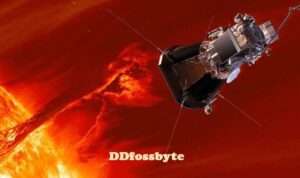In a remarkable feat of space exploration, NASA’s Parker Solar Probe recently executed a daring flyby maneuver, skimming past Venus to gather valuable information. This ambitious mission, part of the Aditya L1 project, showcases NASA’s commitment to unraveling the mysteries of the sun and the cosmos.

The Parker Solar Probe, a NASA spacecraft designed to study the Sun’s atmosphere, made a flyby of Venus. The flyby was the closest the probe has ever come to Venus, and it allowed the probe to collect valuable data on the planet’s atmosphere and magnetic field.
A Glimpse of Venus
The Parker Solar Probe’s close encounter with Venus serves as a testament to human ingenuity and technological prowess. This remarkable maneuver allowed the spacecraft to venture into the vicinity of the sun, enabling scientists to study Venus’s atmosphere and interactions with solar phenomena in unprecedented detail.
Aditya L1 Mission and Parker Solar Probe
The Aditya L1 mission, a collaborative effort involving NASA and other space agencies, seeks to deepen our understanding of the sun and its impact on our solar system. The Parker Solar Probe plays a crucial role in this endeavor by collecting vital data as it navigates the sun’s vicinity, making bold flybys past celestial bodies like Venus.

Unveiling Solar Secrets
The close approach to Venus provided the Parker Solar Probe with a unique opportunity to observe and gather data on the planet’s interactions with solar winds and magnetic fields. These insights will contribute to a comprehensive understanding of space weather phenomena and their potential effects on Earth and other planets.
Pushing Boundaries of Exploration
The successful execution of the Parker Solar Probe’s flyby demonstrates humanity’s capacity to push the boundaries of space exploration. The spacecraft’s cutting-edge instruments and technology enable it to withstand the harsh conditions near the sun, transmitting valuable information that could reshape our understanding of the universe.
A New Era of Solar Discovery
The Parker Solar Probe’s mission not only advances scientific knowledge but also represents a stepping stone toward future breakthroughs in space exploration. As researchers analyze the data collected during the flyby, they anticipate uncovering new insights into the sun’s behavior, solar wind dynamics, and the intricate interplay between celestial bodies.

In 2018, US space scientists launched the Parker Solar Probe, a resolute explorer destined to unveil the Sun’s secrets. Over the past five years, this intrepid spacecraft has diligently collected data from the fiery heart of our solar system. NASA sources reveal the probe’s daring approach to the Sun, edging remarkably close to its blazing surface multiple times. However, a captivating twist unfolded this month, as the indomitable spacecraft grappled with a new challenge.
Leveraging Venus’ gravity, the Parker Solar Probe executed a strategic data collection maneuver. NASA reports that while in proximity to Venus, the probe meticulously gathered insights into the planet’s atmosphere and surface. This remarkable interaction occurred at a distance of approximately two and a half thousand miles from the star.

Nick Pinkine, Parker Solar Probe’s mission operations manager, reflected, “This incident marks a unique event in our 14-year journey. While our encounter with Venus provided limited insights, every piece of information holds value, and none are to be dismissed.” He further noted that Venus’ atmosphere boasts a distinct warmth surpassing that of Earth.
While marveling at the Parker Solar Probe’s engagement with Venus, questions arise about Aditya-L1’s potential interaction with the same planet. ISRO, however, has indicated that such a phenomenon is unlikely to be replicated in their mission.

The Parker Solar Probe, a NASA spacecraft designed to study the Sun’s atmosphere, made a flyby of Venus. The flyby was the closest the probe has ever come to Venus, and it allowed the probe to collect valuable data on the planet’s atmosphere and magnetic field.
The flyby of Venus was a critical milestone for the Parker Solar Probe. The probe used Venus’ gravity to help it change its orbit and get closer to the Sun. The flyby also allowed the probe to collect data on Venus’ atmosphere, which will help scientists understand how the planet’s atmosphere interacts with the solar wind.

NASA’s Parker Solar Probe’s daring flyby of Venus is a testament to human curiosity and the quest for knowledge. This mission, within the framework of the Aditya L1 project, stands as a beacon of scientific progress, bringing us closer to unraveling the mysteries of our solar system. As the data collected during the flyby undergoes analysis, the potential for groundbreaking discoveries looms large, promising to reshape our understanding of the cosmos and our place within it.
